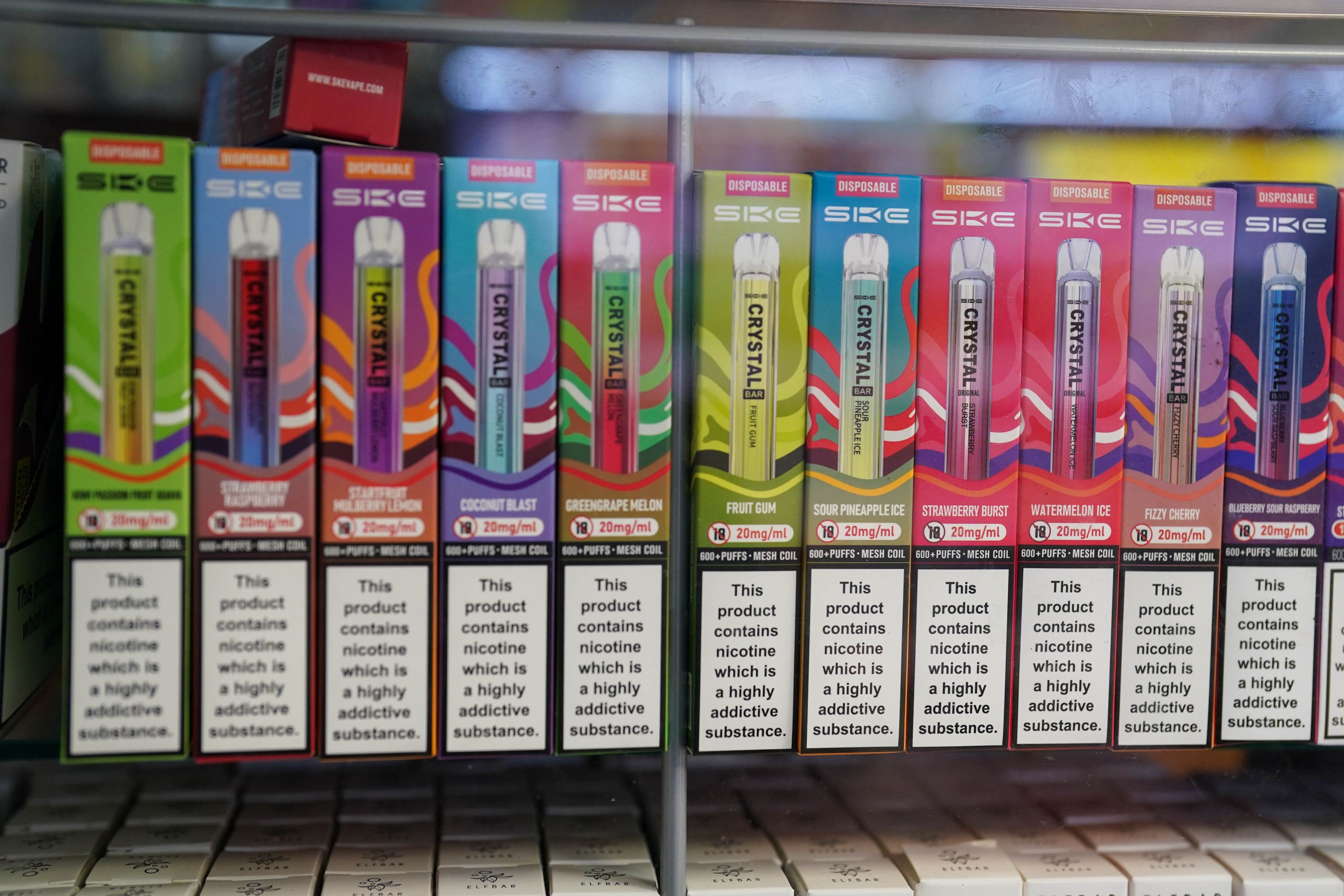Toxic metal warning as study claims different vape flavours effect uranium levels in body
Frequent vapers also had higher levels of uranium in their urine
Your support helps us to tell the story
From reproductive rights to climate change to Big Tech, The Independent is on the ground when the story is developing. Whether it's investigating the financials of Elon Musk's pro-Trump PAC or producing our latest documentary, 'The A Word', which shines a light on the American women fighting for reproductive rights, we know how important it is to parse out the facts from the messaging.
At such a critical moment in US history, we need reporters on the ground. Your donation allows us to keep sending journalists to speak to both sides of the story.
The Independent is trusted by Americans across the entire political spectrum. And unlike many other quality news outlets, we choose not to lock Americans out of our reporting and analysis with paywalls. We believe quality journalism should be available to everyone, paid for by those who can afford it.
Your support makes all the difference.Teenagers who vape could be at risk of exposure to toxic metals, potentially harming brain or organ development, a study has suggested.
Sweet e-cigarette flavours could also pose additional risks, according to researchers.
US academics used responses from part of the Population Assessment of Tobacco and Health (PATH) study, which included American teenagers aged between 13 and 17.
Some 200 teenagers who vaped were included in the analysis, which has been published in Tobacco Control.
Of the group, 81 reported doing so frequently, with 65 reporting occasional use and 45 reporting intermittent use.
Usage was determined by the average number of puffs per day, with frequent users taking 27 puffs, intermittent users taking 7.9 puffs and occasional users taking 0.9 puffs.
Biomarkers in the urine were then assessed for the presence of the metals lead, uranium and cadmium.
Both frequent and intermittent e-cigarette users had higher lead levels in their urine than those who vaped occasionally, the study found.
Frequent vapers also had higher levels of uranium in their urine compared to occasional users.

The study also found that different vape flavours effected the uranium levels.
Some 33% of vapers preferred menthol or mint flavours, while 49.8% used fruit flavoured vapes and 15.3% used sweet flavoured vapes.
According to researchers, those who used sweet flavour vapes had higher uranium levels compared to those who preferred menthol or mint.
A report published by Action on Smoking and Health (Ash) last June found 20.5% of children in the UK had tried vaping in 2023, up from 15.8% in 2022 and 13.9% in 2020.
The Government’s Tobacco and Vapes Bill, which was announced in October, aims to create a “smoke-free generation” by prohibiting the sale of tobacco to people born on or after January 1 2009.
It will also crack down on vapes in a bid to lessen their appeal to children and young people.
Proposals include potentially restricting how vapes are displayed in shops, as well as restrictions on flavours and packaging.
Researchers acknowledged the study’s limitations, including that the presence of uranium in urine could be down to environmental exposure or dietary intake.
However, they said: “Despite the limitations, this study reported increased urine lead and uranium levels associated with vaping frequency.
“Sweet flavours might pose an additional risk of exposure to uranium.
“E-cigarette use during adolescence may increase the likelihood of metal exposure, which could adversely affect brain and organ development.
“These findings call for further research, vaping regulation, and targeted public health interventions to mitigate the potential harms of e-cigarette use, particularly among adolescents.”

Professor Lion Shahab, co-director of the UCL Tobacco and Alcohol Research Group, said: “This is a well-conducted study underscoring the need to carefully monitor exposure in e-cigarette users and highlights the fact that e-cigarettes are not risk free, and therefore should not be used by people who have never smoked, particularly adolescents.”
However, he said the findings should be seen in context, including that uranium exposure can come from a number of sources.
There was also no control group of teenagers who did not vape included in the analysis, he said.
Prof Shahab added: “This study therefore cannot tell us anything about absolute increase in exposure to heavy metals from e-cigarette use in this population, only about relative exposure among less and more frequent e-cigarette users.
“Given that heavy metal exposure is mostly driven by the type of device used, future studies should investigate whether there are any meaningful differences between different e-cigarette types to inform regulators to curtail use of devices that expose users to more heavy metals.
“The relatively small sample size in this study meant that this issue could not be investigated.”

Join our commenting forum
Join thought-provoking conversations, follow other Independent readers and see their replies
Comments